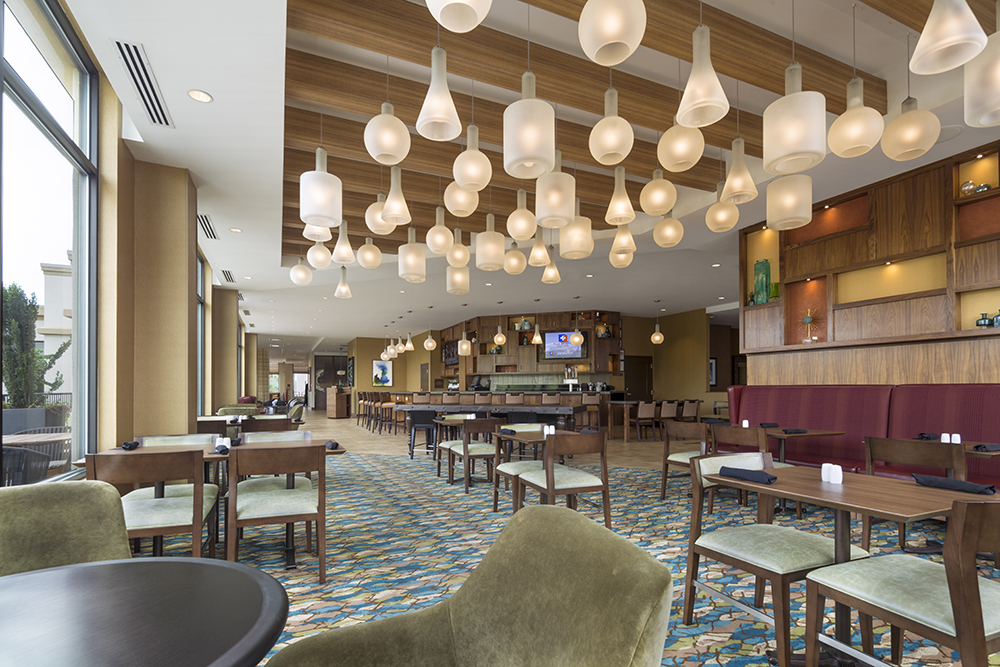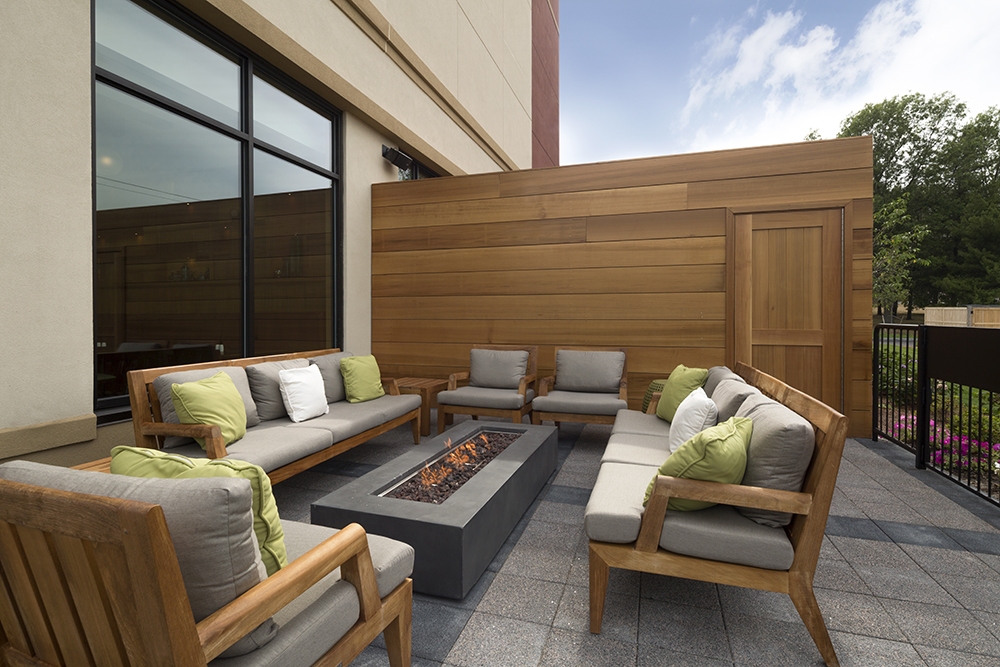
Group One Partners
In today’s hospitality design world, we are doing more and more placemaking – custom designing to meet the needs of both out-of-town guests and the local neighborhood – whether we are working on independent hotels, soft branded hotels, or fully branded hotels. Placemaking is defined as a multi-faceted approach to the planning, design, and management of spaces. This involves catering design to the local communities’ resources, potential, and inspiration with the goal of creating spaces that promote well-being, health, and happiness.
Nearly all recent and current Group One projects have implemented some level of placemaking – from using specialized artwork to reflect the environment of the surrounding neighborhood, to designing public spaces that embody the needs of guests and local residents, and creating guestrooms that serve the desires of business travelers and other visitors. This is typically a win-win for all parties. So, how can modern-day hotels serve their guests, local residents, and neighboring businesses? Let’s dive in . . .
Elements that appeal to guests and the local neighborhood
Hotel Type - It’s critical to evaluate the local environment and which type of hotel design will be welcomed and supported by the area residents and businesses. Can the local economy support a full-service, extended stay hotel that offers guests choices to shop, eat, and play over a prolonged period of time? Or is the local neighborhood instead better suited for a select or limited service hotel that relies more heavily on the surrounding businesses and services?
Restaurants and Bars - Full-service restaurants and bars are prime attractions for both guests and locals. In the design phase, it’s essential to mutually appeal to these groups. This can be achieved by creating warm and inviting entrance and public spaces that don’t require check-in to a front desk upon entering. If locals feel uncomfortable visiting the restaurant and/or bar when not a guest, they are unlikely to give you their business. Also critical to consider is whether the restaurant is hotel owned and operated or if it makes more sense to rent the space to an independent restaurant operator. Either way, creating a public space that is warm, engaging, and that celebrates the local cuisine and drink will go a long way with both guests and area residents.

a great place to gather - Marlborough, MA
Meeting Spaces and Banquet Facilities - Meeting spaces and banquet facilities are key to attracting local businesses and visitors alike. While using the facility to host out-of-towners for conferences, large meetings, or events is paramount, it’s equally important to be able to rent out the space for local community events– especially during times of slower travel. All in all, today’s hotels must appeal to and reflect design choices that cater to multiple audiences to ensure profitability.
An ideal match for residents and visitors
Located in a mixed-use development for businesses, residences, recreation, and education, the Hilton Garden Inn in Marlborough, Mass., is a Group One project that offers guests a prime location close to corporations, sports venues, and nearby highways I-495 and Rte. 20. The property is situated in Forest Hills, a quiet lake and business park area. Once an underserved area for any hotel, dining, or social option, the property takes advantage of a rapidly developing neighborhood to offer visitors and locals a destination to eat, drink, stay, and play.
The new Hilton property boasts an onsite restaurant – BLVD Kitchen & Bar – a casual American bistro featuring a fresh, American cuisine. An open lobby concept invites guests and locals to dine at the restaurant. They can enjoy food and cocktails on the patio that features a fire pit and lounge vibe, great for hanging out with co-workers and friends. The hotel also has a private event space and ballroom that can host more than 300 guests. Other amenities include an indoor pool, fitness center, business center, and a 24-hour convenience mart. The hotel is also located near many area restaurants, shopping, and other conveniences, and offers travelers a free area shuttle service to cater to any off-site needs.
Using design choices and details to tell a story
Aside from location and amenities, today’s guests and locals also want an experience. We know that people want to celebrate the environment in which they are staying or living. To achieve this, telling a story using design choices and details like artwork, finishes, and offered amenities tees up the experiential setting. Important to revel in is the property’s environment, surroundings, and the local history. What is the area known for? Who are the notable people who call this place home? What are the events that have taken place? By selecting one or two focus areas, we can weave this storyline into all parts of the hotel design.

outdoor social zone - Marlborough, MA
The Hampton Inn/Homewood Suites, a Hilton dual-brand hotel in Woburn, Mass., is an example of a Group One project where we used the area’s local culture to tell a story. Notable in Woburn is the Middlesex Canal, a 27-mile waterway that cuts through the city and was used to bring goods from both the coast and the north. Tree bark used to tan leather was transported along the canal to Woburn, transforming it from a rural farm town to a center for what would become a bourgeoning leather industry. We used this local history as a central storyline to help shape our design while staying true to each individual brand’s standards.
The hotel is designed with a fresh, local feel that combines authentic materials and mixed trends. The Homewood Suites design uses organic shapes and natural materials to create traditional, inviting spaces through varied textures and handcrafted artwork. Hampton Inn uses a modern and geometric design in textiles, furnishings, and accessories.
These complementary design stories are separated by a tile corridor from the entry to the rear foyers, mimicking the Middlesex Canal. They provide guests with a clear delineation of amenity spaces. A common color theme of blues and yellows allow for two distinct designs to live in harmony. And the public spaces are designed to create an approachable, warm, and inviting experience.
Celebrating the local flavor
By using placemaking to plan, design, and manage today’s properties, we can cater designs to amplify the local community’s culture, history, and potential; while at the same time, meeting the needs and desires of guests, local residents, and neighboring businesses. It’s never been more important to create properties that are experiential and celebrate the hotel’s place in the world. It’s a tall order, but an exciting time for today’s hotel designers and our industry as a whole.
Harry Wheeler AIA, NCARB, LEED is a principal at Group One Partners, Inc., an award-winning hospitality design firm based in Boston that specializes in architectural, interior design, and purchasing services for hospitality properties.
Wheeler is a registered architect in more than 15 states and a member of numerous architectural, lodging, and marketing associations.








